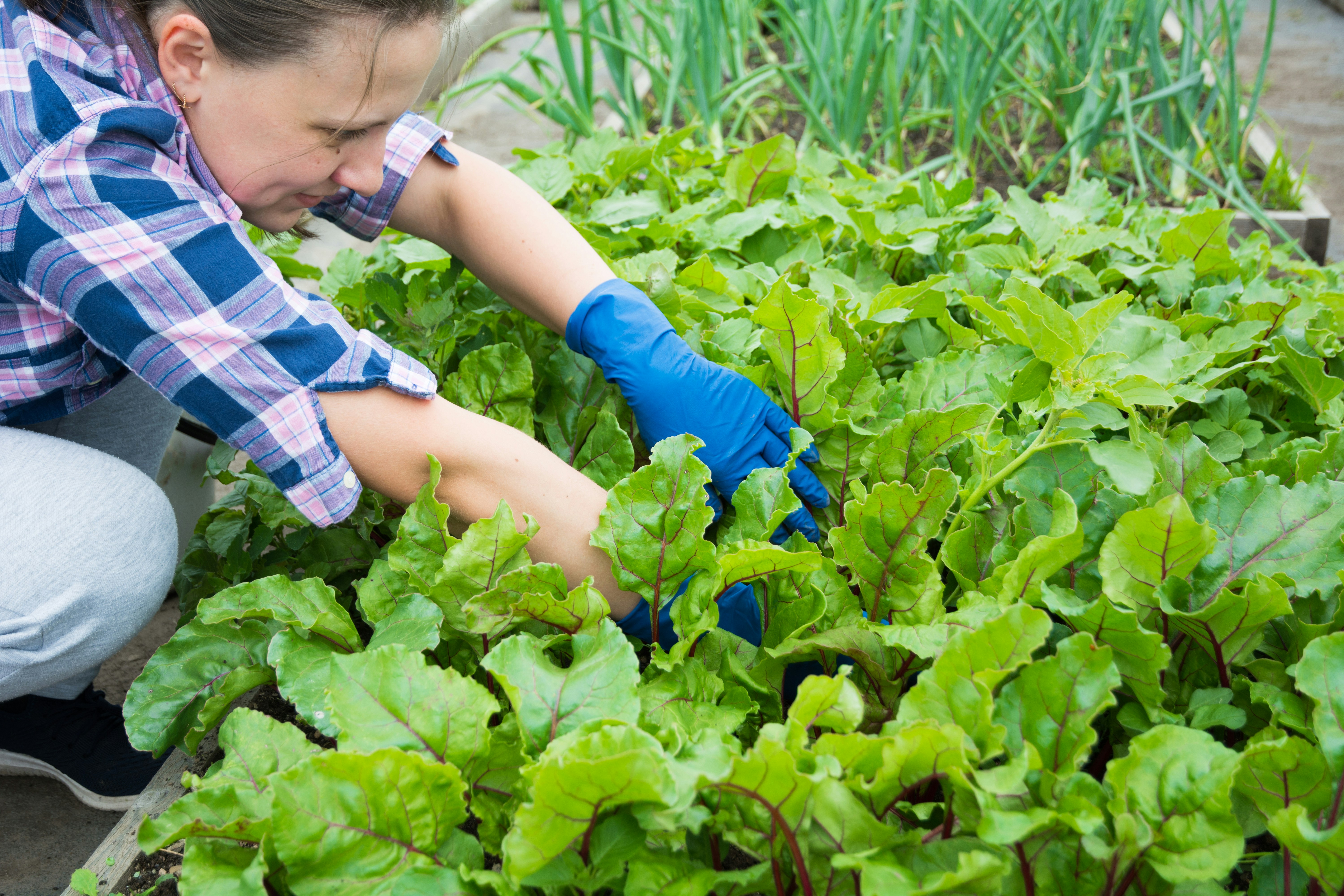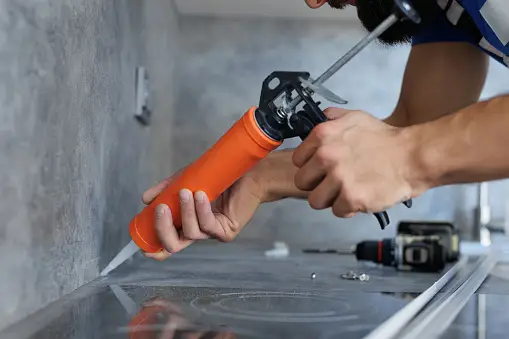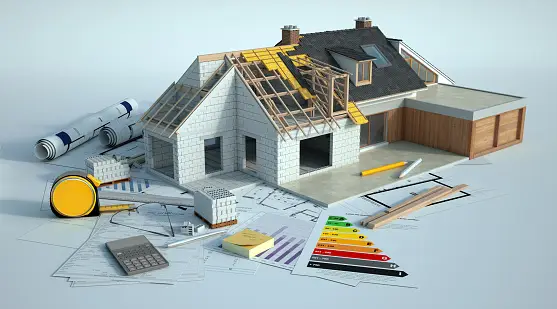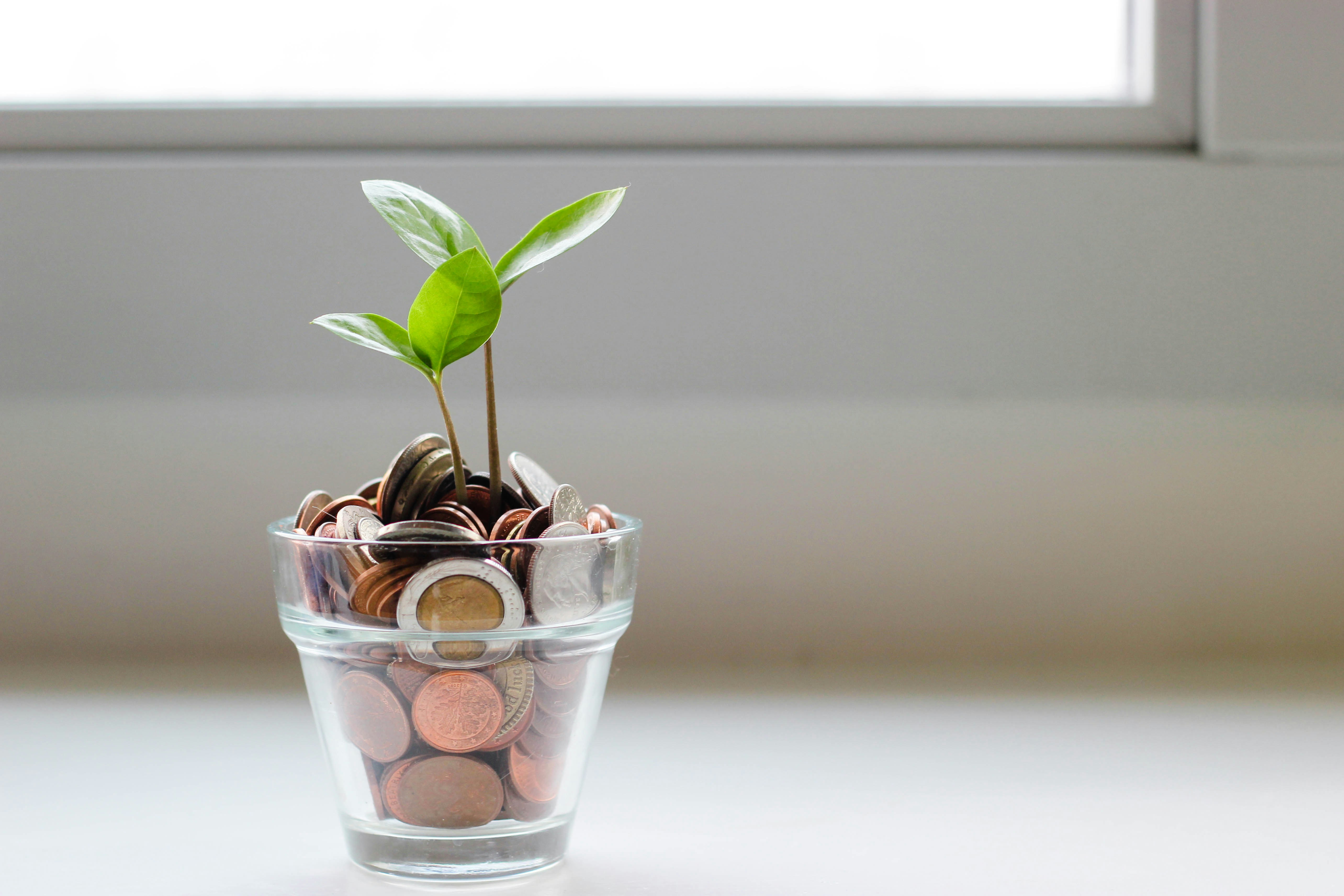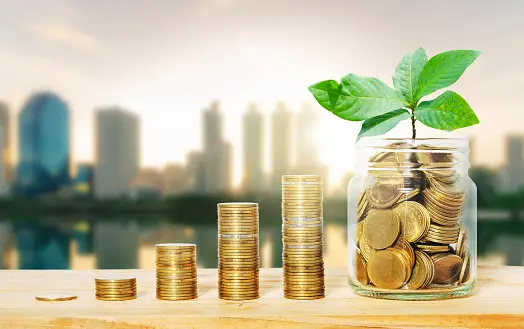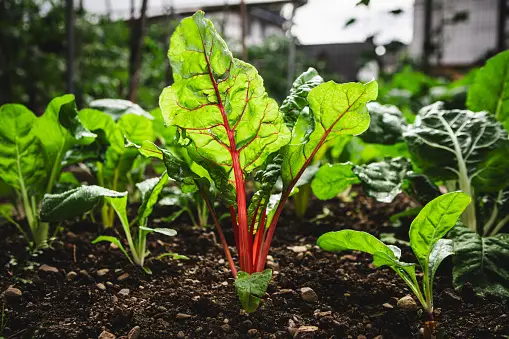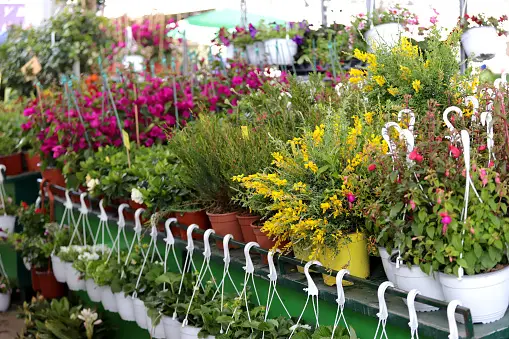Learn how to grow your own food and save money with this beginner’s guide. Discover essential steps, crop selection, soil preparation, and harvesting tips. Start your garden journey today
Introduction
We see the ability to grow your own food as something very fulfilling to the soul as well as being filled with frequent health and personal benefits. Not only does it provide satisfaction of being able to produce food on your own, but also, it will be easier for you to get fresh organic food from your backyard or balcony. Modern society observes a growing number of individuals who pay a special attention to the quality and origin of the foods they consume; gardening enables you eat fresh, pesticide-free, nutrient rich produce. However, gardening is a form of exercising that is good for the health, reduces stress, and improves moods so it is wholesome in the new improved regime.
Growing ones own vegetables may seem like a task which is not very easily accomplished especially for a beginner but such a task is one which requires right guidance and patience and once commenced, can lead to the production of healthy and fresh fruits and vegetables. Even if you are growing plants for the first time, this beginner’s guide will help in putting you through the necessary basics, the place to cultivate until the time you are harvesting food. Regardless of how big or small the space of your outdoor area is, there are a lot of ways on how you can make a productive garden depending on how and where you live. Following these steps and merely accepting that process of learning you will start reaping so much joy and satisfaction from the process of growing your own food and transforming your garden into your own little piece of heaven.
Growing ones own vegetables may seem like a task which is not very easily accomplished especially for a beginner but such a task is one which requires right guidance and patience and once commenced, can lead to the production of healthy and fresh fruits and vegetables. Even if you are growing plants for the first time, this beginner’s guide will help in putting you through the necessary basics, the place to cultivate until the time you are harvesting food. Regardless of how big or small the space of your outdoor area is, there are a lot of ways on how you can make a productive garden depending on how and where you live. Following these steps and merely accepting that process of learning you will start reaping so much joy and satisfaction from the process of growing your own food and transforming your garden into your own little piece of heaven.
1. Choose Your Growing Space
It is therefore important to mind the kind of place chosen for growing the vegetables especially in as much as the amount of light found in the region. All vegetables require an average of six to eight hours of direct sun in a day for better growth. The fact is that a backyard garden allows creating a larger and more assorted garden. If possible look for an area that receives full sun and enjoys good drainage, fortunately or unfortunately most plants like it that way. Any stones, unwanted plant growth, or extraneous matter should be cleared from the land to be used for planting. The using of raised beds most preferably in backyard gardens is advantageous since it helps to control the environment around the plant through the enhancement of the drainage and quality of soil.
Do not let your concern of having a small backyard or living in a city district deter you because there are many vegetables and herbs that you can grow. In other words, you do not require getting a special growing area, because any place could turn into your growing area: it could be a balcony, a patio or even a sunny window sill. These areas begs for containers and raised beds, and you can put virtually anything in them including pots, planters and even hanging baskets. It is also important to see that there is some form of holes at the bottom of the containers to allow proper drainage because packed water at the container bottom leads to root rotting. Selecting filial generations or mini type of vegetables can also assist you make utmost usage of the space availed.
Do not let your concern of having a small backyard or living in a city district deter you because there are many vegetables and herbs that you can grow. In other words, you do not require getting a special growing area, because any place could turn into your growing area: it could be a balcony, a patio or even a sunny window sill. These areas begs for containers and raised beds, and you can put virtually anything in them including pots, planters and even hanging baskets. It is also important to see that there is some form of holes at the bottom of the containers to allow proper drainage because packed water at the container bottom leads to root rotting. Selecting filial generations or mini type of vegetables can also assist you make utmost usage of the space availed.
2. Select Your Crops
Selection of proper crop varieties is very important when planting for a first-timer’s vegetable garden. Begin with vegetables and the herbs that make you happy to consume and those that can be cultivated easily. For instance, tomatoes are selected often and preferred since they require little attention to be paid on them and they can be incorporated into most recipes. They love heat, and can be grown both in pots or straight into the soil. Lettuce is another one on the list of best plants for a beginner; it germinates very fast, and you can harvest it several times during a season. Also, the locally grown lettuce is relatively fresher and flavorful compared to the ones we find in stores.
Gardeners find herbs ideal to grow in their gardens because of their ease in growing and their compact nature. I recommend basil, mint and parsley as you start out because they are very easy to grow. A basil plant grows well in warm climates and can be grown in containers or in a traditional soil garden, this makes it simple to cultivate. Mint has a high resistance ability and can become a nuisance if not controlled, it is recommended to be grown in containers. Parsley is actually the biennial herb thus, it is possible to get the fresh leaves for two seasons provided that they are tenderly handled. In addition to improving the flavor of your food, the following herbs not only improve the smell of your food but also makes your garden to be smelling good.
3. Prepare the Soil
It is critical to participant the quality of your soil because it affects the well-being of your garden and production. The first thing to do is to conduct a home pH test of your soil, or better still, visit your local extension agent to have a sample tested.Vegetables have slight to moderate acidity thus they should be served in a slightly acidic to neutral soil pH of around 6. 0 to 7. 0. In case the soil pH is high, then lime has to be added in the soil to bring down the pH level while in other case sulfur has to be added to raise up the respectively low pH level of the soil. Factors such as altering the ph of the soil in your garden are very key apart from adding organic materials like compost or well rotted manure to your soil. These sort of amendments help adjustment of soil physical characteristics such as cracking, improving on drainage and the nutrient content making it suitable for root growth.
The soil should be prepared and tilled to a depth of not less than twelve inches to enable the roots to go deep into the soil. Two important soil amendments are compost or manure – both to be spread in the uppermost delineation of the root area where readiness in nutrients is critical to your plants. If you are using containers, then pick up a good and healthy potting mix for your vegetable or herb production. This mix should be light, well-draining, and have a good content of organic matter. Do not use garden soil in containers because the soil is usually heavy and may compact and do not allow water to drain well hence the roots may rot.
The soil should be prepared and tilled to a depth of not less than twelve inches to enable the roots to go deep into the soil. Two important soil amendments are compost or manure – both to be spread in the uppermost delineation of the root area where readiness in nutrients is critical to your plants. If you are using containers, then pick up a good and healthy potting mix for your vegetable or herb production. This mix should be light, well-draining, and have a good content of organic matter. Do not use garden soil in containers because the soil is usually heavy and may compact and do not allow water to drain well hence the roots may rot.
4. Sowing seeds
When the time comes to put in your seeds or seedlings, consult the packets or tags of the seeds/plants to know what to do. These instruction will help you on the particular depth, distance and time when to plant each of the type. Space the plants correctly to give every plant enough space needed to grow well and get the necessary light and air, which will discourage diseases. Before sowing seeds, plant the seeds as directed by the seed company or the local climate, and keep the soil damp till the germination. As for seedlings, one has to plant them at the depth equal to the one they occupied in their container.
When planting seeds, water them sparingly to allow the soil to get compacted over the roots and let the seeds absorb the initial moisture that it needs. One has to be careful not to over water since this will result to root rot and many other issues. Seeds, on the other hand, require the same amount of water that is supplied constantly until they germinate. For seedlings, water them time to time and it is recommended that the top soil layer of the seedling pot should be dry before you water the seeds again. It helps to strengthen parts of the plant which is inside the ground hence increase its strength on the ground.Write down the name of the plant and when it was planted at the side of the row or containers for records.
When planting seeds, water them sparingly to allow the soil to get compacted over the roots and let the seeds absorb the initial moisture that it needs. One has to be careful not to over water since this will result to root rot and many other issues. Seeds, on the other hand, require the same amount of water that is supplied constantly until they germinate. For seedlings, water them time to time and it is recommended that the top soil layer of the seedling pot should be dry before you water the seeds again. It helps to strengthen parts of the plant which is inside the ground hence increase its strength on the ground.Write down the name of the plant and when it was planted at the side of the row or containers for records.
5. Water and Mulch
Water is one of the basic necessities in the garden and should be provided to the plants in the right proportion. All vegetables require moderate watering and should be watered 1 to 2 inches either through rain or irrigation. Water your garden when it is still cool most preferably in the morning to reduce the rate of evaporation of water. This enables plants for instance to suck in moisture before the heat of the day. Soak the plant with water and to a considerable depth to promote strong root development, but avoid water-logging since it hampers root development. Drip irrigation systems or soaker hoses can be very effective in supplying the right amount of water at the right frequency and at the same time will not waste water.
The following are some of the benefits of mulching which include the conservation of evaporation of water, controls the growth of weeds and moderates temperature of the soil. Examples include straw, wood chips, or mown grass that disintegrates and improves the nutrient content of the soil. To maintain a proper microclimate top the soil around the plants with a 2 to 3 inches layer of mulch, however, it’s very important not to place the mulch next to the stem as this promotes rotting. Because of mulching, watering frequency is less and the soil moisture level in the garden is comparatively standardized which in turn is favorable for the plants and their yield.
The following are some of the benefits of mulching which include the conservation of evaporation of water, controls the growth of weeds and moderates temperature of the soil. Examples include straw, wood chips, or mown grass that disintegrates and improves the nutrient content of the soil. To maintain a proper microclimate top the soil around the plants with a 2 to 3 inches layer of mulch, however, it’s very important not to place the mulch next to the stem as this promotes rotting. Because of mulching, watering frequency is less and the soil moisture level in the garden is comparatively standardized which in turn is favorable for the plants and their yield.
6. Protect Your Garden
Preventing pests and diseases affecting your garden is very essential for the success of your farming activities. Some insects which are commonly found to be a threat to plants are aphids, snails, slugs and caterpillars which cause harm to the foliage and the fruits. Pests can be easily observed through holes they make in the plants, or through the sticky substance on the plants. Try to combat pests in the most ecological friendly ways possible to give beneficial insects a chance and also prevent the contribution to the current destruction of the environment. For instance, wild ladybugs are produced to manage aphids, while copper tape round containers is effective in withstanding snails and slugs. Other practices including inter-cropping or planting one crop near the other such as planting marigold near tomatoes help in keeping away unwanted insects.
However, when it comes to diseases one needs to be very cautious as they have may harm ones garden. Disease control is also facilitated by proper organization of the plants and the irrigation practices in that they allow proper air circulation and minimizing on wetness.Cropping system means changing the kind of crops planted on a piece of of land every year would greatly minimize the incidences of attack by soil-borne diseases. Therefore, exercising measures and paying close attention, you can avoid the this happening to your garden and have a healthy growing season.
However, when it comes to diseases one needs to be very cautious as they have may harm ones garden. Disease control is also facilitated by proper organization of the plants and the irrigation practices in that they allow proper air circulation and minimizing on wetness.Cropping system means changing the kind of crops planted on a piece of of land every year would greatly minimize the incidences of attack by soil-borne diseases. Therefore, exercising measures and paying close attention, you can avoid the this happening to your garden and have a healthy growing season.
7. Harvest and Enjoy!
There really is no better way to enjoy gardening and at the same time get a good crop than by harvesting your own vegetables at home. Timing and techniques on the method of harvesting is very essential so that your crops are properly harvested for optimum taste and nutrition value possible. Each type of vegetable and herb also has it best time of the year to be harvested. For instance, tomatoes need to be harvested when they turn red and slightly soft to the hand whereas lettuce should be harvested in the morning when its leaves are fresh and fleshy. However, harvesting should be done consistently so as to imply the production process hence do not delay harvesting when your vegetables are ready for harvesting.
After that give yourself some time to enjoy with the home grown vegetables and fruits if you have cultivated them. Veggies and herbs directly from the garden contain more of their nutrients and taste than those sold in stores. They can be eaten with just a simple preparation by slicing and serving them on a salad or a soup, used in any meals that one prefers or stored for future use through preservation methods such as canning, sun drying or freezing. Another good thing about having a own garden is that you can share with your loved ones which is also quite satisfying. Gardening gives you a chance to consume organic and healthy food, and makes you feel satisfied with the result as well as with the relation with the nature.
After that give yourself some time to enjoy with the home grown vegetables and fruits if you have cultivated them. Veggies and herbs directly from the garden contain more of their nutrients and taste than those sold in stores. They can be eaten with just a simple preparation by slicing and serving them on a salad or a soup, used in any meals that one prefers or stored for future use through preservation methods such as canning, sun drying or freezing. Another good thing about having a own garden is that you can share with your loved ones which is also quite satisfying. Gardening gives you a chance to consume organic and healthy food, and makes you feel satisfied with the result as well as with the relation with the nature.
Conclusion
Vegetable farming is a rewarding exercise, and if you have been intending to start the practice, there are benefits associated with it such as; Gardening is considered a learning activity, and it is expected that one may face some difficulties at one point or the other. Every gardener is aware that each growing season is a result of a new experience and a chance to increase one’s knowledge. If things do not work out the way you expected do not despair, instead consider it an opportunity to gain more experience to make you a better gardener in future.
Over the course of years, you discover something new about the plants and try something new in gardening and the layout of the garden. Enjoyment of gardening is in the progressive process, and in the mass of green the gardener crushes out of existence, and turns into solid, wholesome, sustaining food. Read this guide through and follow it step by step, and remember to have a little patience with yourself and your new vegetable garden and before you know it you will be enjoying fresh vegetables and spinach from your garden, enjoying gardening and Mother Nature in a way you may never have done before.
Over the course of years, you discover something new about the plants and try something new in gardening and the layout of the garden. Enjoyment of gardening is in the progressive process, and in the mass of green the gardener crushes out of existence, and turns into solid, wholesome, sustaining food. Read this guide through and follow it step by step, and remember to have a little patience with yourself and your new vegetable garden and before you know it you will be enjoying fresh vegetables and spinach from your garden, enjoying gardening and Mother Nature in a way you may never have done before.


